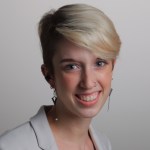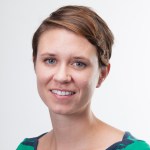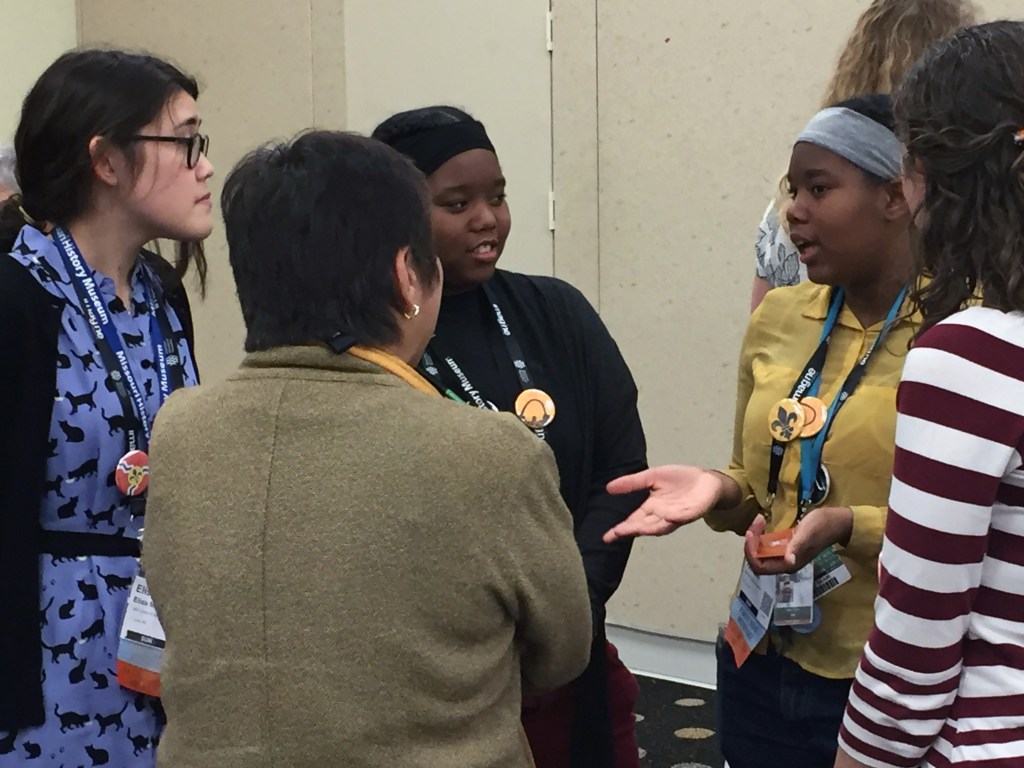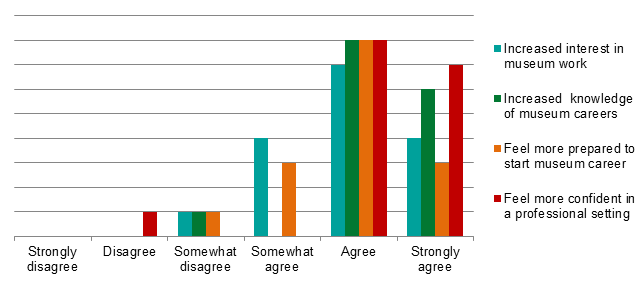


In a session at the 2017 AAM Annual Meeting in St. Louis, a look around the room revealed a small sea of mostly mid-career museum professionals with experience and interest in education and interpretation. The presenter posed a question: “Think of a time when your curiosity was shut down. What held you back?” A murmur of voices swelled as attendees discussed the question amongst themselves. When the presenter invited participants to share with the whole group, there was a pause. Then, an answer came from an unexpected source. A student in a teen program at the Saint Louis Science Center shared a story about not asking a knowledgeable visitor for more information about an exhibit because her boss was nearby and she didn’t want to seem ignorant. Her anecdote was highly relatable, resonated with the audience, and kicked off a rich discussion among the many seasoned professionals in the room.
What is surprising about this story is not that a high school student was able to productively contribute to the session. It was that she was in the room at all.
Skip over related stories to continue reading articleOver the past few years, there has been an increasing recognition in the museum field that we need to do more to increase access to the profession. As members of the St. Louis Host Committee for the 2017 AAM Annual Meeting, one of our tasks was to develop an educational, advocacy, or service project that would co-occur with the meeting yet have an impact long after the last attendee packed up and went home. In an effort to support both AAM’s diversity and inclusion goals and emerging professionals considering careers in cultural institutions, we came up with the Access Fellowship. The purpose of the program was to expose high school and college students to the museum field and provide opportunities for them to connect with established professionals. Students affiliated with museums in the St. Louis area were invited to come to the Annual Meeting, attend sessions with a local mentor, and meet with visiting professionals at a special networking event.
The Access Fellowship had a positive impact on not only the thirty-two students who participated in the program but also the forty-six established professionals who volunteered their time as mentors and spoke to the students during the networking hour. While the Access Fellowship was originally designed to take place at the AAM Annual Meeting, it provides a model for engaging students and introducing them to museum careers that could be adapted and replicated even without the context of a national conference.
“[The Access Fellowship] helped me explore possibilities in the museum world and broaden what I thought possible in the field.”
After the Annual Meeting, the vast majority of students who had participated in the Access Fellowship reported that their interest in working in a museum and their knowledge of available careers had increased and that they felt more prepared to pursue a career in cultural institutions. Additionally, most of the student fellows reported feeling more confident in a professional setting after spending the day attending sessions and networking.
Many students reported that attending the Annual Meeting helped clarify their vision for the future and connected them to resources to help them reach their goals. One, in particular, called out the importance of both information and mentorship for drawing people into the field: “The sessions opened up the possibilities for what careers and types of museums there are across the country. The mentors were genuinely interested in our career paths or educational goals and that made it easier to have our voices valued and make stronger connections.”
The benefits that student fellows received from the program were not limited to their deepened understanding of the museum field. Many students also commented on how the program contributed to their professional development more generally. For some, the experience was empowering: “I felt like I gained confidence in professional [and] networking settings.”
For others, the experience provided a supportive environment to practice developing professional skills: “The networking session taught me that I have a lot of work to do with my social skills. I felt completely flustered, but that’s a sign that I need to do something about it.”
One student fellow summed it up by saying the most helpful aspect of the Access Fellowship program was “learning how universal skills relating to museums are.”
“Participating made me feel that I had made a real contribution.”
While the student fellows had a lot to learn from their local mentors and visiting professionals, many seasoned professionals emerged from the experience inspired and invigorated as well. Following the networking event, one professional wrote: “It was nice to see things and hear about things from such a young excited point of view. We can sometimes get bogged down with why things WON’T work, and he was very positive, thinking about all the cool things museums could do.”
Many local mentors reflected on how the Access Fellowship was a step in the right direction to making the museum field more welcoming and inclusive. One focused on the need to work more deliberately with young people interested in the field: “This mentorship opportunity really helped me to think about how and why people get into the museum field currently and how much more we should be doing to change this. We talk so much about access and inclusion in the museum field, but we need to be starting with young people and doing more with them.”
The networking event also allowed visiting professionals to meet each other: “It was a positive experience. I was able to connect with some old colleagues, as well as make new connections with more experienced professionals.”

While networking within professional organizations and peer groups is important, intergenerational and interdisciplinary programs like the Access Fellowship networking event help create and strengthen ties across the entire field.
Call to Action: “It felt like a drop in the bucket towards making access to museum careers more equitable.”
A common refrain in the survey responses from student fellows, local mentors, and visiting professionals was that the Access Fellowship was an incredibly valuable part of their conference experience. However, this was just one small and isolated initiative. To truly have an impact on diversity, equity, access, and inclusion in the museum field, there need to be more programs like this and there needs to be more of an emphasis on continued engagement. We envisioned the Access Fellowship around the AAM Annual Meeting, and were we to do it over again, we would have followed up more with the students and encouraged them to stay in contact with their mentors.
So here is our challenge to you:
Find networking and conference opportunities to help bring emerging professionals in your region to the next level. Many cultural institutions around the country have programs that serve teens and college students. Take initiative and connect these students in these programs to each other and to professionals from other institutions. Localized internships and teen programs are valuable opportunities, but they can become even more valuable when they connect teens and college students to the broader possibilities within the museum field.
Four core components contributed to the success of the Access Fellowship. In creating a similar program, as many of these components as possible should be retained:
- Inclusion of high school students.
- Preparatory meeting for the student fellows before the event.
- Pairing student fellows with local mentors.
- Special networking event.
However, all of the above could be scaled up or down depending on the particular circumstances of your region.
To learn more about how we put together the Access Fellowship and get ideas for how you can implement a similar program in your own community, please contact us. You can reach Amy at amy.miller@wustl.edu and Sarah at ssims@mohistory.org. We would be thrilled to answer any questions you might have and to share timelines, budget information, meeting and conference schedules, sample invitation emails, and more.
Together, let’s help welcome the next generation of museum professionals.
About the Authors
Amy Miller is the Assistant Educator at the Mildred Lane Kemper Art Museum at Washington University in St. Louis. She works mostly with college students, teaching frameworks for interpretation and visual analysis skills.
Sarah Sims is the Manager of K–12 Education Programs at the Missouri History Museum. Her areas of interest are museum literacy, inquiry-based learning and teaching, and the connection between empathy and the museum experience. Sarah also serves as Vice President of the Museum Education Roundtable.









Comments